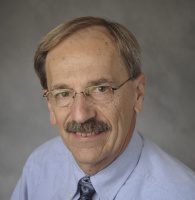Final Thoughts: Many Changes in Engineering, but the Main Priority Remains the Same

In previous “Final Thoughts” columns, I looked back at the work environment when I began my career some 40-plus years ago, which included calculations with slide rules, drafting on mylar and working in an open-space office. Today’s office and “tools of the trade” now are very different. Some things are better; some are not. The following are a few of my observations.
Time Off and Workforce Diversity
I believe that everyone benefits from significant time away from work. Since I began working, the number of holidays, vacation days and sick days given to employees has been diminishing. When I first started, I received 14 holidays (15 if there was a primary election in a particular year), more vacation time than I could afford to take off and a dozen sick days. At one place I worked, our employees also received a floating holiday in the month of their birthday.
Now I get seven holidays, and I’m down to four weeks of vacation (“Personal Time Off”) and zero sick days. Perhaps I was more fortunate than others when I started, but less paid time off seems to be a trend. More-recent benefits, such as family leave and health incentives, although good for many, may not offer paid time off.
Early in my career, the workforce was predominantly white male engineers and drafters. There were a few engineer coworkers from India and very few women, mostly in support roles. I’ve written before about the value of a diverse workforce, and, although there’s still room for progress, this is one area that’s now definitely better than before. As I look around the office, I see folks of many different cultural backgrounds.
But I still believe engineers should return to the schools and universities we attended to help attract a more-diverse student population. Everyone should have the opportunity to be an engineer.
Evolving Work Environment
Reference materials have undergone major changes through the years. I used a few textbooks, design manuals and, of course, the AASHTO Bridge Design Specifications and the AISC Steel Manual (the blue one) on my reference table behind my drawing board. That sounds old-fashioned compared to a PDF file on one screen and the drawing on the other two screens, but is either system better? Probably not as long as the references are current. But similar to holding a book to read instead of a digital device, I prefer the paper method.
Many people used to have radios on their desk, often creating conflicting musical tastes. Headphones and earbuds solved that problem, but may have created an atmosphere of working alone instead of as partners. I’m not sure where I stand on this, but I know that I enjoyed the community that co-workers formed. I see some of that community today, but it’s mostly evident only at lunch and after work.
As part of the work environment, office furniture and layout has cycled through many changes: an open concept, cubicles with high and low partitions, individual offices, and back through all these options. I guess the jury is still out on what’s the best layout, but the chairs I’ve been using in the last few years are much better than my original steel drafting stool with a homemade cushion.
Faster Tools
The speed and accuracy that design work can be completed is far better than it was in the 1970s and 1980s. Computers, CAD, GIS and modelling software can investigate many options in a fraction of the time it used to take to analyze one option. Technology improved the design process through the years, but now there’s little opportunity to create a design and drawings that can be looked at as a personal accomplishment—a work of art, in a way. There was pride in signing your name to a set of plans that you personally designed and drafted, and I’m not sure that happens as much anymore.
Many things have changed through the years of my career—some unimaginable when I started; some better, some not. What remains, however, is the importance of engineers’ work. We plan, design and build with the good of the larger community and environment as our priority. I hope that never changes.
About Robert Schickel
Robert Schickel was born in New Jersey and received his BS in Civil Engineering degree in 1971 from Valparaiso University in Indiana. His career started as a bridge design engineer and expanded to include design of various transportation facilities, including highways, bridges, rail lines and stations, and airport runways. Mr. Schickel managed engineering offices ranging from 20 to 140 people. He also served as a consultant to a large utility company. Mr. Schickel currently resides in Indiana and serves as Adjunct Professor for the College of Engineering at Valparaiso University. He enjoys his retired life at his lake house, playing golf, listening to music and spending time with his family, especially his grandchildren.


